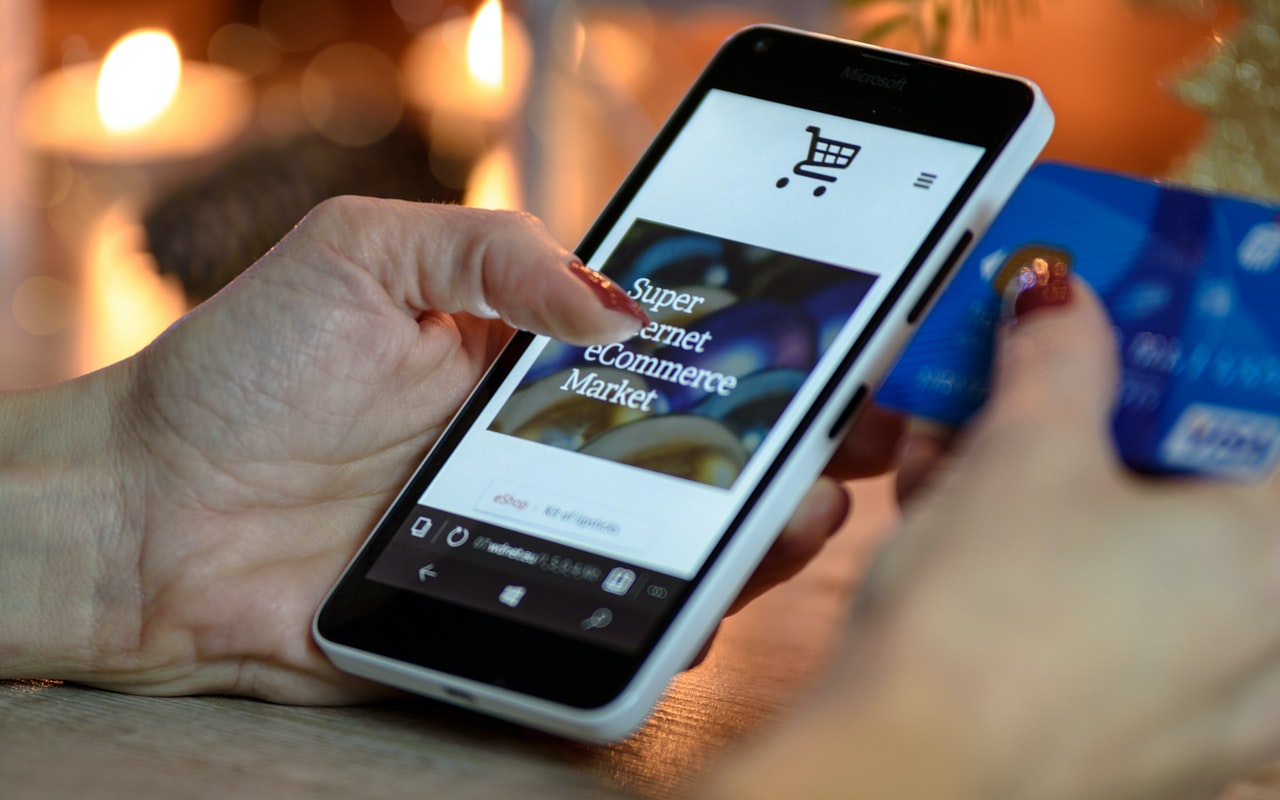In the digital age, customer experience has become one of the most important aspects of doing business. In fact, 86% of buyers will pay more for a great customer experience.
Today CX is crucial in all industries. It can be the main “make it or break it” factor for a business. However, each sector has its own customer experience trends that need to be considered.
That’s why in this article, we’re going to take a look at the customer experience in eCommerce and what businesses need to do to create a great customer experience in 2022.
What is customer experience?
I know what some of you might be thinking: customer experience is just a fancy term for customer service.
While customer service is certainly a part of CX, it’s much more than that.
The customer experience (CX) is defined as the sum total of all customer interactions with a company. This includes everything from the initial contact to after-sales service.
It’s important to note that customer experience isn’t just about the customer’s interaction with your brand or product. It also includes their perception of your brand. In other words, customer experience is the overall perception that a customer has of your company.
What about the importance of CX in eCommerce?

Since eCommerce is a digital industry, customer experience plays a particularly important role. In fact, studies have shown that companies that focus on customer experience and retention have seen around a 200% greater chance of increasing their market share.
There are several reasons for this. First of all, online shoppers are used to having a great customer experience. They’re used to being able to find what they’re looking for quickly and easily, and they’re used to getting great customer service.
Second of all, online shoppers are a fickle bunch. They’re quick to switch to another site if they don’t get the customer experience they want.
Finally, online shoppers are more likely to share their bad experiences with others. CCMC found that unhappy customers are twice as likely to tell their friends about a bad experience than happy customers are to recommend a good one.
And keep in mind that it is harder to win back an unhappy customer than it is to keep a happy one.
So, as you can see, customer experience is extremely important in eCommerce. If businesses want to be successful in this industry, they need to focus on creating a great customer experience.
How to create a positive customer experience in your e-commerce store
Now that we’ve seen the importance of customer experience in eCommerce, let’s take a look at how businesses can create a positive customer experience.
Remember when we said that CX was the overall perception, from initial contact to after-sales service? that a customer has of your company?
That’s why we will section the tips into the following parts: Awareness – Consideration – Purchase – Post-purchase.
This way, you can make sure that your customer experience is positive from start to finish.
Ready, set, go!
Phase 1 – Awareness

The awareness phase is when the customer first becomes aware of your product or service.
They could be scrolling through their Facebook feed and see an ad for your product, or they could be searching for a specific product on Google.
The goal of this phase is to get the customer’s attention and make them interested in your product or service.
Your customers need to be aware of your eCommerce store before they can consider buying anything from it.
This means that you need to do a great job of marketing your store.
Here are a few tips for creating a positive customer experience in the awareness phase:
Make sure your ad stands out
When customers are scrolling through their Facebook feed, they’re bombarded with ads. It can be tough to get their attention.
That’s why it’s important to make sure your ad stands out. Use bright colors and eye-catching images. And make sure the text is easy to read.
Remember, your awareness ads are the first thing your customers will see, so you want to make a good impression.
Make sure the graphics are high quality, the text is grammatically correct and the images are relevant to your product.
The quality of your ad will set the tone and expectations for the customer’s experience of your eCommerce store.
Focus on organic content
Ads are great, but there’s a reason they’re part of “interruptive marketing”: they interrupt the process of the customer doing something else.
This is why it is important to also focus on organic content. This type of content is not paid for and is mainly found by users who are doing a keyword search or who have already visited your site/social networks.
For example, if you run a fashion e-commerce, you might want to create content that teaches your customers how to mix and match different clothes and colors.
Customers are more likely to share this type of content, which will help you reach new ones, create a connection with them, and play a positive role in the customer experience journey.
Phase 2 – Consideration
The consideration phase is when the customer starts to think about buying your product or service. They might visit your website, read your blog or watch one of your videos.
The goal of this phase is to make the customer interested in buying your product and convince them that you are the best option for them.
Optimize your website or app
Whether your customer is visiting your website or app, you want to make sure the experience is positive.
Make sure the website/app is intuitive, easy to navigate and that the customer can find what they’re looking for quickly.
The effort you put into making your website or app easy to use will reflect on the customer’s experience of it.
Personalize your product recommendations
If a customer is browsing your website, you might want to show them product recommendations based on their search history or the items they have added to their cart.
This will help the customer feel that you understand them and that you are catering to their needs, further enhancing the customer experience and increasing the chances of a sale.
If you want a professional team to help you with your website and additional features like personalization, contact us for a free consultation. Our experienced eCommerce developers can help you create the perfect customer experience for your store.
Provide valuable content
In this phase, it’s important to provide valuable content. This could be in the form of blog posts, videos, infographics or eBooks.
The customer is trying to learn more about your product and how it can solve their problem. So you need to give them lots of information to help them make a decision.
Make sure your content is well-written, accurate and relevant to your product.
For example, if you sell sports equipment, write or record a case study of how your product helped a customer achieve their fitness goals.
Similarly, show them customer testimonials by posting a video or graphical posts of customer reviews on your website or social media pages.
It’s one thing what you say about your product, but it’s more powerful when customers say it for you.
Phase 3 – Purchase

The purchase phase is when the customer decides to buy your product. In this phase, you need to create a feeling of enthusiasm and excitement in your customer’s mind about the product.
Make it easy for them to buy
When a customer clicks on the “add to cart” button, you want them to be able to complete the purchase without any problems.
This means that you need to have a smooth checkout process and that all of your payment and shipping options are available.
Also, make sure your customer is aware of any discounts or offers you might have.
For example, offer free shipping on orders over a certain amount or give a percentage discount for first-time customers.
This will make the customer feel appreciated and happy.
Create an order confirmation email
When the customer completes their purchase, you want to make sure they receive an order confirmation email.
This email should include all the information about the product they have bought, such as the price, size and color, shipping information and the expected delivery date.
Don’t just send these details without any text that shows your customer that you appreciate their purchase.
Even in order confirmation emails, you can show your appreciation to the customer by adding a personalized message. For example:
“Thank you for your purchase, [Name]! Your product is being prepared and will be on its way soon. We can’t wait to hear what you think of it. We hope it meets all of your expectations. If there’s anything else we can do to help, no feel free to let us know.”
Send regular updates on the shipping process
It’s a known fact that customers get impatient and anxious as soon as they order the product.
They want to know when their product is being shipped, where it’s at and when they can expect to receive it.
This is why you should send regular updates on the shipping process to your customer.
For example, update them once the product has been shipped, provide tracking information and let them know if there are any delays. When your product reaches the courier and is on its way to the customer, be sure to send another update.
Just like for the confirmation email, you can let your creativity loose and send updates that stand out. For example:
“Hello, [Name]! Your product has just shipped and is on its way to you. We’re just as excited as you are to see your reaction when it arrives. In the meantime, here’s an article on the top five exercises to do at home. This should keep you busy and well prepared for when your product arrives. Thanks for being a part of our community :)”.
Phase 4 – Post-purchase
Just because the customer has made a purchase doesn’t mean the job is done. Customer experience does not end when the customer has received the product.
In fact, it’s just the beginning. This phase can be an opportunity to create customer loyalty and encourage them to come back for more or even share their experience with their friends.
Ask for feedback
The best way to improve customer experience is by asking for customer feedback. This can be done in a number of ways, such as surveys or social media posts.
When the delivery is made, wait several days and send a customer satisfaction survey and ask them to rate their experience (this can include everything from product quality to customer service).
Asking for feedback (and acting on it!) is the best way to show your customer that you appreciate them.
Provide superb customer service
Even if the customer has had a great experience, they might still have some questions or need help with something.
That’s why it’s important to provide any kind of customer support. This can be done through social media platforms, email or even phone. Omnichannel customer service is the best way to go.
Make sure you have a customer service team that is up for the task and knows how to deal with different kinds of customers.
Keep customers engaged with newsletters
Don’t let your customers forget about you! Keep them engaged with your brand by sending them newsletters.
In these newsletters, you can include anything from new products to customer stories. Let them know if you have any events coming up and remind them what makes your brand unique.
The benefits of providing a great customer experience
Providing high-class CX certainly requires dedication, time, and effort. Some might wonder if it’s worth it. Let’s discover some of the benefits of providing an excellent customer experience.
- Increased customer loyalty – Happy customers are more likely to return, recommend your brand to their friends and buy again from you. In fact, 89% of customers who have had a great customer experience are likely to buy from the same company again.
- Reduced cost of service and marketing – It costs six times more to acquire a new customer than it does to keep an existing one. Satisfied customers are a result of providing great customer service, which doesn’t have to be expensive.
- Increased sales and revenue – A happy customer is more likely to spend money. In fact, 84% of companies that focus on customer experience report an average increase in revenue.
- Improved brand perception – Customers who have had a great customer experience are more likely to recommend your brand, even if they don’t buy from you again. And that’s good news because word-of-mouth is the best form of marketing there is.
eCommerce Metrics to Measure Customer Experience
Now that we know how important customer experience is, it’s time to start measuring it. What e-commerce metrics should you consider to determine the health of your customer experience?
- Net Promoter Score (NPS) – The NPS measures how likely customers are to recommend your brand to others. It’s a good indicator of customer loyalty and satisfaction.
- Conversion rate– This measures how many people who visit your site actually make a purchase. It’s a good indicator of customer interest and engagement.
- Customer Lifetime Value (CLV) – The CLV measures how much a customer is worth to your business over the course of their relationship with you. It takes into account factors such as customer loyalty, referrals, and repeat purchases.
- Customer Churn Rate – The churn rate is the percentage of customers who stop doing business with you. It’s a good indicator to spot customer dissatisfaction early on.
Each of these metrics will give you different insights into the customer experience. Use them to find areas where you can improve and make your customer’s experience the best it can be.
eCommerce CX example
After reading this article, you may be wondering what a good eCommerce customer experience (CX) really looks like. Let’s take a look at an example of Zappos.
Zappos is an online shoe and clothing retailer that is known for its great customer service. In fact, they pride themselves on it. Zappos offers free shipping both ways and a 365-day return policy. If you’re not happy with your purchase, you can send it back and get a full refund, no questions asked.
The customer service team is available 24/7 to help you with your purchase. They are known for going above and beyond to make sure the customer is happy.
75% of Zappos purchases come from returning customers. This should be no surprise, given the details we read above.
If you’re looking for a model of excellent customer experience, Zappos should be your go-to example.
Zappos is an example of a company that puts customer experience first. They understand that happy customers are the lifeblood of their business and they go out of their way to make sure every customer has a great experience.
Conclusion
Customer experience is essential for eCommerce businesses. In order to keep up with the competition, you need to focus on delivering a great experience.
You need to understand if what you are doing is working. This means measuring customer experience using metrics such as the NPS, conversion rate and customer lifetime value.
However, don’t just focus on numbers – talk to your customers too! Customer feedback can give you insights into what you’re doing well and where you need to improve.
Use social media to your advantage and make sure to converse with customers. After all, customer service should be personal, not just through a help desk.
Hopefully, this article has given you a better understanding of customer experience and how to deliver it from start to finish.








